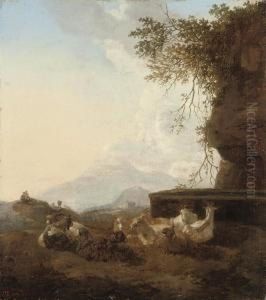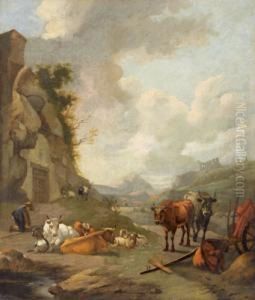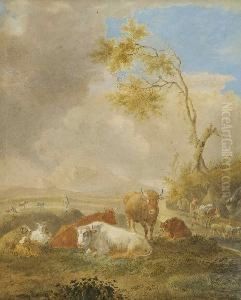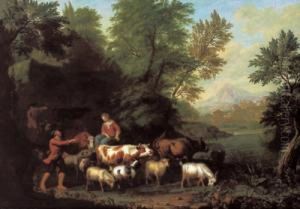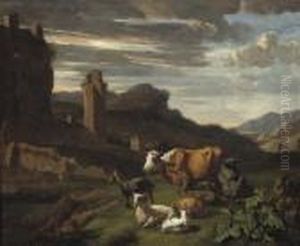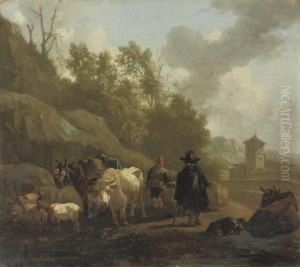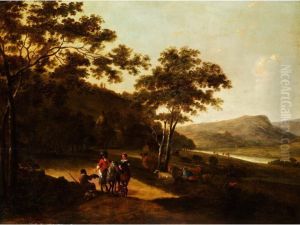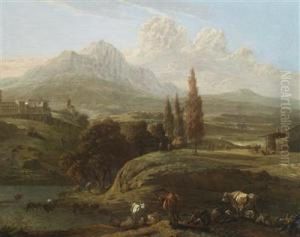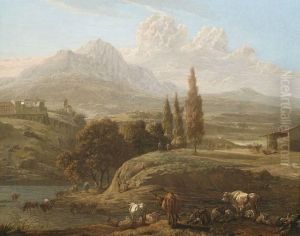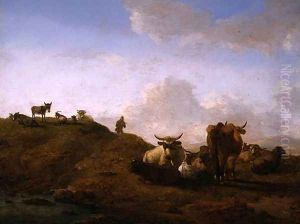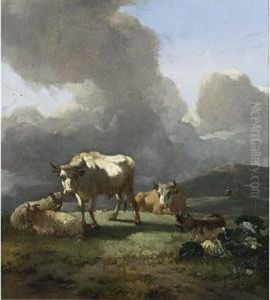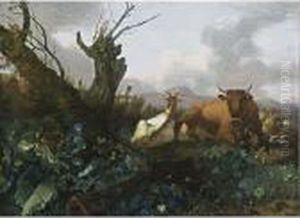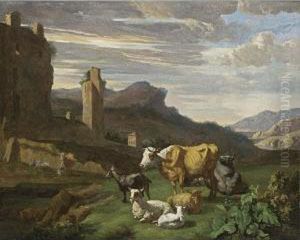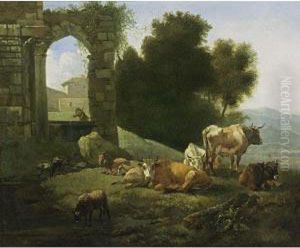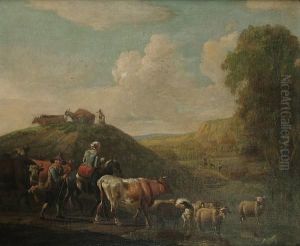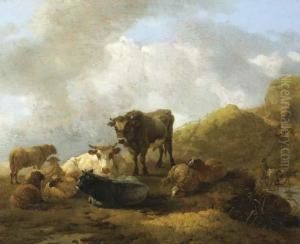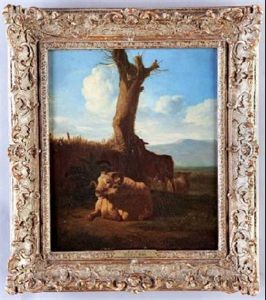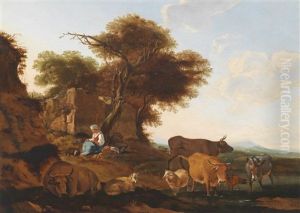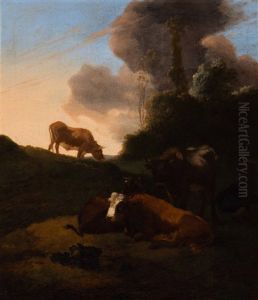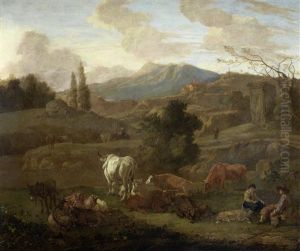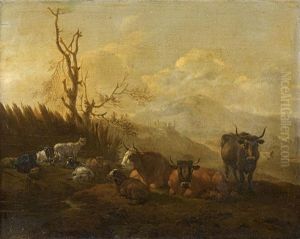Willem Romeyn Paintings
Willem Romeyn was a Dutch Golden Age painter known for his distinctive landscapes and animal paintings. Born around 1624, likely in Haarlem, he was part of an era where Dutch art was flourishing with a demand for new kinds of paintings, including detailed landscapes and genre scenes.
Romeyn's work was greatly influenced by the Haarlem school of painting, which was characterized by a keen attention to detail and the use of light to create depth and atmosphere. His landscapes typically featured pastoral scenes with cattle and shepherds, often bathed in a warm, golden light. These works were well-regarded for their realism and the lifelike portrayal of animals.
Despite his talents, not much is known about Romeyn's life. He did not leave behind a large body of work, and his paintings were often overshadowed by the more prominent artists of his time. However, his contributions to Dutch landscape and animal painting were significant, and his work is sometimes compared to that of Paulus Potter, a contemporary who was also known for his animal paintings.
Romeyn was a member of the Haarlem Guild of St. Luke, which was a typical practice for artists of the time. This affiliation helped him to establish connections with other artists and potential patrons. His works were mostly collected by connoisseurs and art lovers of the Dutch middle class, who had a taste for the pastoral and bucolic scenes he painted.
Willem Romeyn's exact date of death is not known, but it is estimated to have been around 1694. Today, his paintings can be found in various art museums and private collections, appreciated for their serene beauty and historical significance within Dutch Golden Age art.
